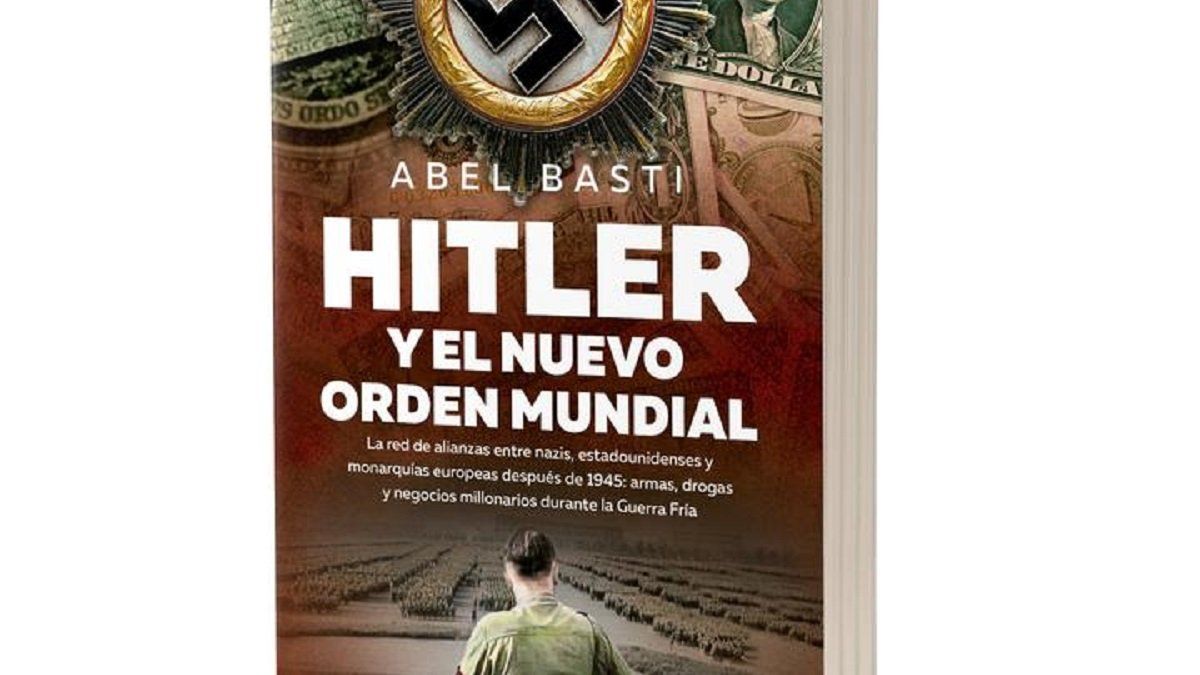In his work on historical revisionism, the author tries to show that although at the end of the Second War Nazism formally disappeared from the scene, the companies, the military and the politicians who helped the war effort of the Third Reich continued in activity, maintaining the same ideology, who had transcended the borders of Germany, and doing business of great magnitude during the Cold War.
In this new stage, which began shortly after the armistice was signed, the two great powers that had been allies during the war, the United States and the Soviet Union, in a very short time became staunch enemies. And paradoxically, the Americans and the Nazis, previously at odds, became partners to combat communism whose expansion threatened the capitalist world.
To support this thesis, Basti details the large German holding companies that, after the end of the conflict, continued to bill millions, particularly those related to the war industry, sometimes even associated with US companies. In this sense, the book mentions arms and vehicle, steel, pharmaceutical and chemical industries, among others, whose owners, who had helped Adolf Hitler, went unpunished; and the few who were convicted, always with light penalties, benefited from successive amnesties granted by the Allies.
hitler 2.jpeg
Added to this is the evasion and “recycling” of thousands of Nazis who, after crossing the Atlantic, restarted their new lives on the young continent. Several of them worked for the American governments, especially for the United States, fulfilling functions in civilian and military official dependencies (the North Americans hired German veterans as intelligence agents, instructors of the armed forces, experts in bacteriological and chemical wars, etc.).
In the case of brains, the most emblematic case is that of Wernher von Braun, a missile expert in Nazi Germany and later the father of the American space development that would put man on the moon, who, like dozens of German scientists, was brought to work in the United States in the framework of the well-known Paper Clip Operation, destined to capture for that country the gray matter of the Third Reich, ignoring its rugged Nazi past.
To show a button: von Braun himself in 1940 had entered the fearsome Waffen SS (Schutzstaffel) and was accused of using slave labor in the factories under his command. Other ex-Hitlerist soldiers joined the teams of the large German firms that settled in different American countries, for example. Adolf Eichmann who worked as a submissive and efficient clerk at Mercedes Benz, in Buenos Aires.
After the war, some Nazis served for the CIA or for the new Federal Intelligence Service (BND) created by West Germany in the 1950s, such as the criminal Klaus barbie, commander of the Gestapo in France, who, based in Bolivia, came to hold the rank of lieutenant colonel in the Army of that country. It is astonishing that despite being a fugitive from justice, Barbie received fees from both the CIA and the BND, as evidenced by declassified documentation. Also significant is the number of military personnel who, after being part of Hitler’s armed forces, served in the North Atlantic Treaty Organization (NATO). An example is the renowned German general Adolf Heusinger -key man in the invasions perpetrated by the Nazis that allowed Hitler to subdue European countries- who later, during the Cold War, was a secret agent of the CIA and later president of the military committee of the aforementioned multinational military alliance.
Paradoxically, as a sign that historical revisionism research never ceases to amaze us, Basti’s book assures that from the 1950s Some Nazis were hired by the Israeli secret service Mossad to fight against the Arabs, for example General Walter Rauff, inventor of mobile gas chambers, or the well-known commando Otto Skorzeny, famous for rescuing the Italian dictator Benito Mussolini from prison. , among other special operations ordered by Hitler.
According to the author, these events were possible within the framework of a secret postwar impunity pact agreed by the top of international power, a framework that seems like a fiction but that was confirmed, as a harsh and unknown reality of a not-so-old past. far away, thanks to the progressive declassification of US intelligence documents.
In the book Hitler and the New World Order it is stated that The intricate networks that were woven after 1945, bringing together war veterans, were dedicated to helping Latin American dictatorships and making huge dividends through arms trafficking and drug trafficking. The best known case is that of the aforementioned Barbie, who commanded the cocaine routes, who moved with absolute impunity in Bolivia, at the time turned into a narco state governed by corrupt uniformed men, a country that in 1974 rejected a request for the extradition of the cited war criminal carried out by France.
In the text of this literary research work, the names of characters and companies involved in the construction of the so-called post-war “New Order” are detailed, also including members of the European monarchies who, according to the author, have gone unnoticed at the time of look for those responsible for a complex plot that had unspeakable ends. In this sense, the book highlights the relationship of the European royal houses with Hitler, and draws the reader’s attention to large deals, some of which caused tremendous scandals such as when the North American aeronautical company Lockheed revealed in 1979 that, in order to sell planes to the Netherlands, it had to pay a $ 1 million bribe to Prince Consort Bernardo, husband of Queen Juliana of the Netherlands.. (Bernardo, who died in 2004, was the grandfather of the current King Guillermo, married to the Argentine Máxima Zorreguieta).
With the narration of an incredible number of interrelated cases, providing meticulous details of each event, Basti puts together a puzzle with relevant information to finally show a different picture of history that never ceases to amaze.
Hitler alive?
This sum of data, several of them unpublished, is enough to justify the appearance of this new book by Editorial Planeta, but the author, who in previous works exposed his theory that Hitler did not commit suicide in Berlin but escaped to Argentina, advances one more step.
In this regard, he assures that Adolf Hitler not only took refuge in the country but also held different meetings and encounters with national and foreign politicians, military, and businessmen. In that sense, he mentions, based on testimonies collected during his investigation, an alleged meeting between Adolf Hitler and the Rosario businessman Luis Escarabino, linked to the Rosario Central club, held in 1949 in La Falda, Córdoba. The author assures that Escarabino was a partner in the marriage made up of Ida and Walter Eicchorn, Hitler’s German-Argentine financiers.
This account agrees with that of Catalina Gamero, a trusted person of the Eichhorn, who in the 90s publicly assured that she attended to the former Führer at the couple’s residence located in La Falda. It is also consistent, according to the author’s explanation, with a declassified FBI document, after the end of the war, which indicates that the Eichhorn had made “the necessary preparations” in La Falda to receive Hitler. In another case, Basti assures that during those years there was also a meeting in which Hitler participated in the Chaco town of Samuhú, where the former Führer met with executives of the firms La Forestal SA Y Samuhí S.A., both run by affiliates to the Nazi party, formally non-existent at the time. The German businessman participated in that meeting Walter Hinckeldeyn and two executives of the companies mentioned, with surnames Hote Y Hoefe, according to the meticulous narration of a German custodian who was in that meeting held in a large house known as “La Mansión”, currently in ruins, located within a large property that in November of this year was expropriated in favor of the municipality of Samuhú, through provincial law No. 1,432.
There, in addition to “La Mansión”, in the 40s there was a tannin processing industry, a laboratory, a hotel and a train station. Also a small airstrip that was used by the Germans, according to the testimony of ancient settlers. Basti relates this place, and the nearby town of Charata, with a suggestive declassified document, also from the FBI, presented in his book, which ensures that the highest Nazi hierarch had an alternative refuge in Chaco territory.
Hitler and the New Order invites the reader, believe or not in the escape of the Führer, to a shocking revisionist journey of history with documented and precise data of an incredible network of interests that puts official history in check.
Source From: Ambito
David William is a talented author who has made a name for himself in the world of writing. He is a professional author who writes on a wide range of topics, from general interest to opinion news. David is currently working as a writer at 24 hours worlds where he brings his unique perspective and in-depth research to his articles, making them both informative and engaging.




